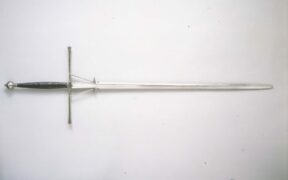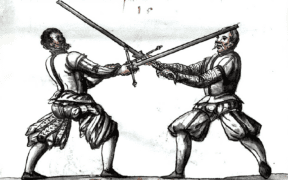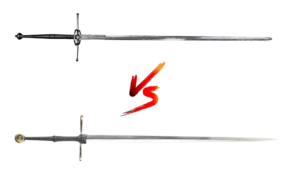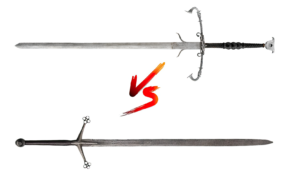Zweihander Sizes: Weight, Length & Specs Explored
NO AI USED This Article has been written and edited by our team with no help of the AI
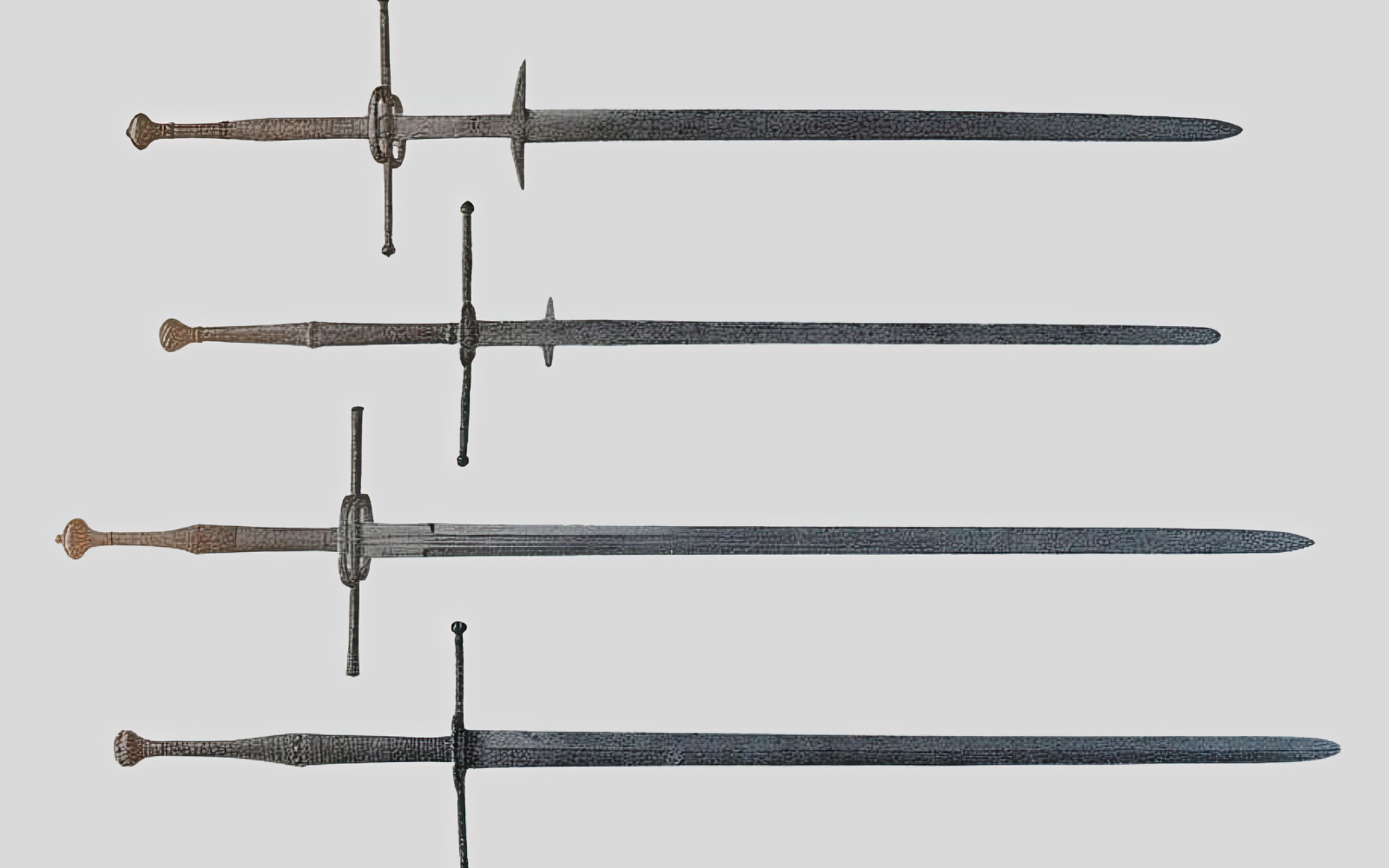
Two-handed swords were long favorite weapons in many parts of Europe. Recognized for its massive long blade with parrying hooks, the zweihander was the two-handed sword of the German Landsknechts that was mainly used in the 16th century.
This article explores the unique characteristics of the zweihander.
Metal and Construction
Throughout the Middle Ages and Renaissance, European swordsmiths were capable of producing high-quality steel blades such as longswords that hold its edges. Given its massive size, zweihanders rarely had full tempered blades, though earlier swordsmiths likely forge-tempered them using excellent steel.
Today, HEMA (Historical European Martial Arts) practitioners can acquire replicas made from high carbon steel, but these tempered blades are often shorter than historical examples.
Size and Weight
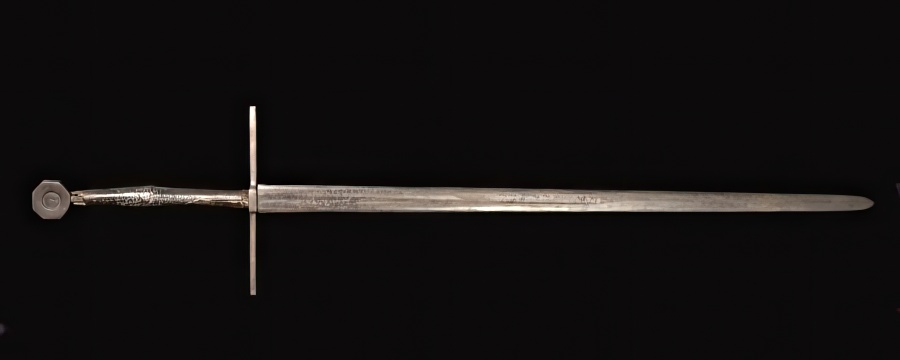
The German two-handers have a remarkable length, ranging from 59 – 68.9 inches (150 – 175 cm) with a blade length of more than 47.2 inches (120 cm). Although historical examples were not as heavy as they looked, they are still heavier compared to other swords such as the arming sword.
Robert C. Woosnam-Savage at the Royal Armouries writes: “The fighting two-handed sword, weighed on average between 5 – 7 lbs (2.3 – 3.2 kg). This includes the greatsword and tallies with the weight of zweihanders:
- Historical zweihanders for combat – Weighs about 3 – 7 lbs (1.4 – 3.2 kg)
- Ceremonial zweihanders – Heavier than those for combat, ranging from 10 – 15 lbs (4.5 – 6.8 kg).
However, the weight of the sword is not determined only by the blade length as the blade cross-section and hilt style are other factors to consider. A zweihander with a slender blade measuring roughly 57 inches (145 cm) long may weigh just over 3 lbs (1.4 kg).
While the weapon required two hands, its long crossguard likely helped balance its weight.
Blade Appearance
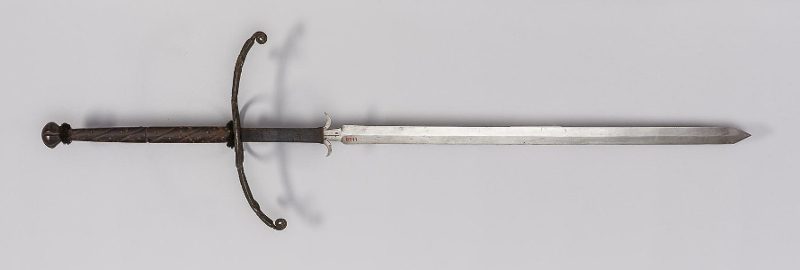
The zweihander typically had a slender, slim blade with two parrying hooks. However, its blade shape, cutting edge, and ricasso may vary.
Blade Shape
Most German two-handers had straight blades, though there were also flammard blades with wavy, undulating edges. Straight blades were sometimes single-edged, but flammard blades were always double-edged with a sharp or blunted tip.
Since the Landsknechts used the zweihander sword for hacking through the enemy pike formations rather than to pierce its victims, blunted tips were not uncommon.
Ricasso
The zweihander features a ricasso, an unsharpened part of the blade. This allowed the wielder to grip above the crossguard for greater strength. Historical examples had a thick ricasso, usually 0.6 inches (1.5 cm) with modern replicas often having the same thickness as the blade.
Parrying Hooks
Sometimes called parierhaken, parrying hooks served as a secondary guard for the ricasso to catch other weapons. They protrude from the blade, about 3.9 – 7.9 inches (10 – 20 cm) above the crossguard.
Sword Mounting
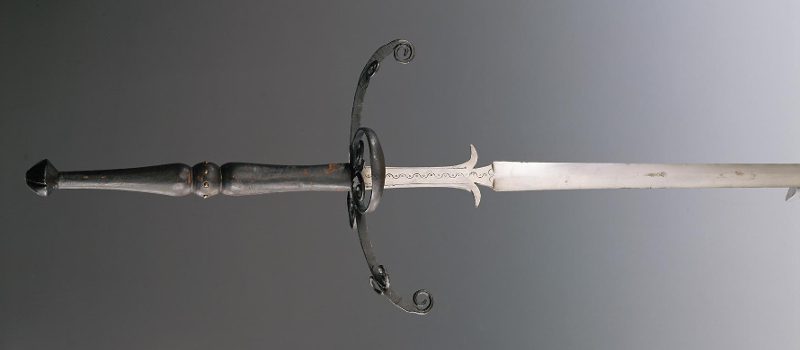
German two-handers usually feature a crossguard that curves toward the blade and side rings on the quillons, though others are more elaborate. The pommel is often spherical or mushroom-shaped with a bare or leather-wrapped ricasso. The Landsknechts traditionally carried the sword over the shoulder like a halberd.
Greatswords vs Pikes

Polearms such as battle axes and halberds have different blade designs where straight edges are more effective for smashing armor while those with curved edges cut better as energy is focused on a smaller point. These should not be confused with pikes which are long thrusting spears, well known as the primary weapons of Swiss mercenaries, German Landsknechts, and French sans-culottes.
Meanwhile, greatswords are one of the heaviest and biggest swords in history. For example, Pier Gerlofs Donia’s zweihander is 7 ft (2.13 m) in length and weighs a whopping 14.6 lbs (6.6kg). However, it is said that he was a very tall person standing at 7.1 ft (2.15m) and could pick up a plough with one hand.
When it comes to greatswords versus pikes, there are a few good examples in history:
In the battles of Morat and Nancy, the Swiss infantry secured notable victories using pikes. Emperor Maximilian I felt threatened by them and hired Landsknecht mercenaries in 1486 to fight for him when necessary.
Although most of them were pikemen, there were also doppelsöldners who wielded the zweihander to break pike formations at the frontlines. In the Battle of La Bicocca in 1552, the German Landsknechts defeated the Swiss pikemen who were elites of the European battlefield.
Versatile and effective, the zweihander’s blade could be used to cut and thrust, its hilt to smash or pummel, while its quillons hook the opponent or their weapons. It could also chop the shafts of opposing weapons such as pikes.
